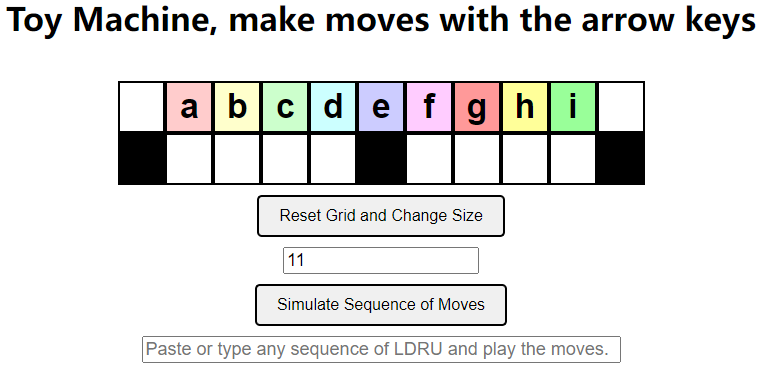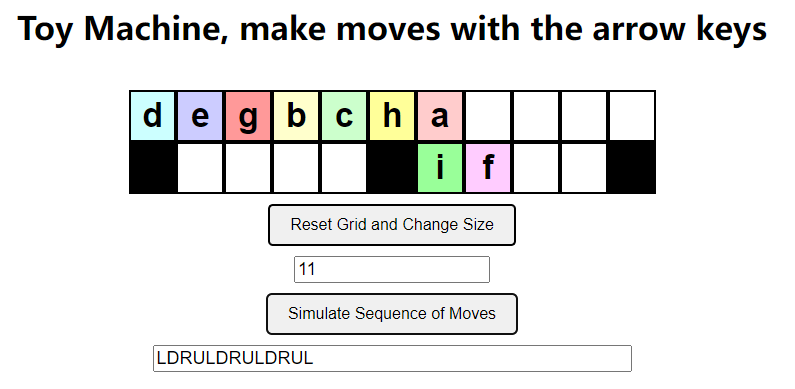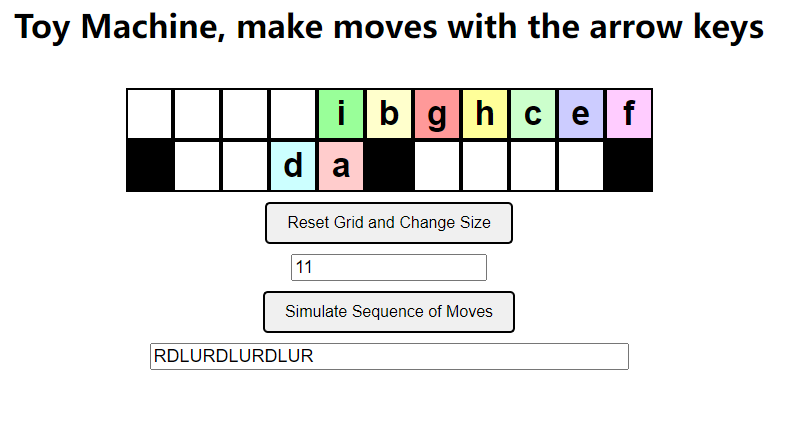【题解】CF1817 合集
CF1817A Almost Increasing Subsequence
标签:思维题 \(C\)
考虑几乎上升的序列的长度,就是我们的区间长度减去 \(a_{i-2} \geq a_{i-1} \geq a_i\) 的对数,然后维护即可,当然个人感觉自己的代码有点长,可以考虑看洛谷题解代码
code:
#include<bits/stdc++.h>
using namespace std;
const int NN = 2e5 + 8;
int n,q;
int a[NN];
int pre[NN],cnt[NN],ck[NN];
int main(){
// freopen("1.out","w",stdout);
scanf("%d%d",&n,&q);
for(int i = 1; i <= n; ++i) scanf("%d",&a[i]);
for(int i = 1; i <= n; ++i){
if(i < n && a[i] >= a[i+1]) pre[i] = 1,ck[i] = 1;
if(i < n && a[i] >= a[i+1] && a[i-1] < a[i]) cnt[i] = 1;
pre[i] += pre[i-1];
cnt[i] += cnt[i-1];
}
// for(int i = 1; i <= n; ++i) printf("%d ",pre[i]);puts("");
// for(int i = 1; i <= n; ++i) printf("%d ",cnt[i]);puts("");
while(q--){
int l,r;
scanf("%d%d",&l,&r);
if(l == r){puts("1");continue;}
if(l == r-1){puts("2");continue;}
printf("%d\n",(r-l+1) - (pre[r-1] - pre[l-1]) + (cnt[r-1] - cnt[l] + ck[l]));
}
}
CF1817B Fish Graph
我们的目的就是找到一个环,且环上的其中一个点至少和环外两个的点有边相连。
我们考虑我们肯定不能把所有的环都找一遍,这样一定会 TLE。
那么我们该怎么做呢?
我们可以发现一个性质,就是一个环上如果有度数大于等于 \(4\) 的点,那么这个点一定包含在满足要求的环内。(显然很容易证明)
我们就可以从度数大于等于 \(4\) 的点开始搜索(那么我们会有两种情况):
- 我们搜到了一条连向当前搜索树的根的返祖边,那么我们一定能找到一个环上只包含。时间复杂度 \(O(n^2)\)
- 我们搜不到一条连向当前搜索树的根的返祖边,那么这个点就不在任意一条环上。时间复杂度 \(O(n)\)
因为我们只需要找到一个满足要求的环即可,所以总的时间复杂度为 \(O(n^2\times 1 + n\times n)\),即 \(O(n^2)\)
code:
#include<bits/stdc++.h>
using namespace std;
const int NN = 2e3 + 8;
int t,n,m;
int sta[NN],top,gt;
bool vis[NN],col[NN];
int du[NN];
struct Edge{
int to,next;
}edge[NN << 1];
int head[NN],cnt;
void init(){
for(int i = 0; i <= n; ++i) head[i] = -1,vis[i] = 0,du[i] = 0;
cnt = 1;top = 0;gt = 0;
}
void add_edge(int u,int v){
edge[++cnt] = {v,head[u]};
head[u] = cnt;
}
int nowu,nowv;
int eu[4],ev[4];
bool check(int u,int v){
nowu = u;nowv = v;
bool res = 0;
int tp = top;
while(sta[tp] != u) col[sta[tp--]] = 1;
col[sta[tp]] = 1;
tp = top;
while(sta[tp+1] != u){
int fm = sta[tp--],cnt = 0;
for(int i = head[fm]; i != -1 && cnt <= 2; i = edge[i].next){
int to = edge[i].to;
if(!col[to]){eu[cnt] = fm;ev[cnt++] = to;}
}
if(cnt >= 2) {res = 1;break;}
}
tp = top;
while(sta[tp] != u) col[sta[tp--]] = 0;
col[sta[tp]] = 0;
return res;
}
void dfs(int u,int fae,int rt){
sta[++top] = u;vis[u] = 1;
for(int i = head[u]; i != -1; i = edge[i].next){
int v = edge[i].to;
if((i^1) == fae) continue;
if(v == rt){
if(check(v,u)) gt = 1;
}
else if(!vis[v])dfs(v,i,rt);
if(gt) {vis[u] = 0;return;}
}
--top;vis[u] = 0;
}
int main(){
scanf("%d",&t);
while(t--){
scanf("%d%d",&n,&m);init();
int rt;
for(int i = 1,u,v; i <= m; ++i){
scanf("%d%d",&u,&v);add_edge(u,v);add_edge(v,u);
++du[u];++du[v];
}
for(int i = 1; i <= n; ++i,top = 0) {
if(du[i] >= 4) dfs(i,-1,i);
if(gt) break;
}
if(gt){
puts("YES");
int tp = top,ans = 0;
while(sta[tp] != nowu) ++ans,tp--;
ans += 3;
printf("%d\n",ans);
for(int i = tp; i < top; ++i)
printf("%d %d\n",sta[i],sta[i+1]);
printf("%d %d\n",sta[top],sta[tp]);
printf("%d %d\n%d %d\n",eu[0],ev[0],eu[1],ev[1]);
}
else puts("NO");
}
}
CF1817C Similar Polynomials
标签:数学 \(B^+\)
多项式次数太高了,不好处理。考虑 “求导” 降次。离散意义下就是差分。
我们知道,对函数做形如 \(f'(x) \gets f(x + 1) - f(x)\) 的差分,则 \(\deg f' = \deg f - 1\)。所以将 \(d + 1\) 个点值差分 \(d - 1\) 次,\(A\) 从 \(d\) 次变成 \(1\) 次,也就是直线 \(A' = kx + b\)。
\(A(0\sim d)\) 的 \(d - 1\) 阶差分 \(a_0, a_1\) 分别等于 \(A'(0), A'(1)\),相当于 \(kx + b\) 在 \(x = 0\) 和 \(x = 1\) 处的点值。
\(B(0\sim d)\) 即 \(A(s\sim s + d)\) 的 \(d - 1\) 阶差分 \(b_0, b_1\) 分别等于 \(A'(s), A'(s + 1)\),相当于 \(kx + b\) 在 \(x = s\) 和 \(x = s + 1\) 处的点值。
显然,根据 \(a_0\) 和 \(a_1\) 可以直接确定直线,再代入 \((s, b_0)\) 或 \((s + 1, b_1)\) 即可。答案即 \(\frac {b_1 - a_1} {a_1 - a_0}\) 或 \(\frac {b_0 - a_0} {a_1 - a_0}\)。
至于 \(k\) 阶差分怎么求:
你考虑多项式差分的定义为:
我们可以从生成函数的角度考虑,一次差分本质上就是乘上了 \((x-1)\),\(k\) 阶差分就是乘上了 \((x-1)^k\) 即可推出下面的式子:
时间复杂度 \(\mathcal{O}(d)\)。
code:
#include<bits/stdc++.h>
using namespace std;
typedef long long ll;
const int NN = 3e6 + 8,MOD = 1e9 + 7;
ll d;
ll A[NN],B[NN];
ll fac[NN],inv[NN];
ll ksm(ll x,ll k){
ll res = 1;
while(k){
if(k&1) res = res * x % MOD;
x = x * x % MOD;
k >>= 1;
}
return res;
}
ll binom(ll n,ll m){
return fac[n] * inv[m] % MOD * inv[n-m] % MOD;
}
int main(){
scanf("%lld",&d);
fac[0] = 1;
for(int i = 1; i <= d; ++i) fac[i] = fac[i-1] * i % MOD;
inv[d] = ksm(fac[d],MOD - 2);
for(int i = d; i >= 1; --i) inv[i-1] = inv[i] * i % MOD;
for(int i = 0; i <= d; ++i) scanf("%lld",&A[i]);
for(int i = 0; i <= d; ++i) scanf("%lld",&B[i]);
ll k,b,res = 0;
for(int i = 0; i <= d-1; ++i)
res = (res + binom(d-1,i) * ((d-1-i)&1?-1:1) * A[i]) % MOD;
b = res;res = 0;
for(int i = 0; i <= d-1; ++i)
res = (res + binom(d-1,i) * ((d-1-i)&1?-1:1) * A[i+1]) % MOD;
k = res - b;res = 0;
for(int i = 0; i <= d-1; ++i)
res = (res + binom(d-1,i) * ((d-1-i)&1?-1:1) * B[i]) % MOD;
ll s = (res - b) * ksm(k,MOD - 2) % MOD;
printf("%lld",(s+MOD) % MOD);
}
CF1817D Toy Machine
标签:思维题 \(B\)
一道很好玩的游戏题。
题目也非常良心,给了一个可以操作的网页:

option 1:我们考虑手玩一下可以发现左半部分很简单,就是 LDRU 即可,然后最后接一个 L(下图为将 d 挪到最左边)。

关键是右半部分怎么挪动到左边?
option 2:我们发现我们可以使用 RDRU 将所有玩具都挪到最右边,然后再用一个 L 将最右边的玩具挪到最左边

option 3:现在我们就需要将右半部分的玩具挪到最右边,可以模仿挪到最右边的方法 RDLU 即可,然后最后接一个 R(下图为将 f 挪到最右边)

我们的右边的玩具的挪动方法便出来了,就是先用该玩具通过 option 3 挪到最右边,再使用 option 2 将其挪到左半部分,最后使用 option 1 将其挪到最左边。
code:
#include<bits/stdc++.h>
using namespace std;
int n,k;
int main(){
scanf("%d%d",&n,&k);
if(k == n/2) return puts("DL"),0;
if(k < n/2){
for(int i = 1; i < k; ++i) printf("LDRU");//operation 1
printf("L\n");
}//左半边
else{
for(int i = k; i < n-2; ++i) printf("RDLU");//operation 3
for(int i = 1; i <= n/2+10; ++i) printf("RDRU");//operation 2
for(int i = 1; i < n/2; ++i) printf("LDRU");//operation 1
printf("L");
}//右半边
}
本文来自博客园,作者:ricky_lin,转载请注明原文链接:https://www.cnblogs.com/rickylin/p/CF1817.html


 浙公网安备 33010602011771号
浙公网安备 33010602011771号